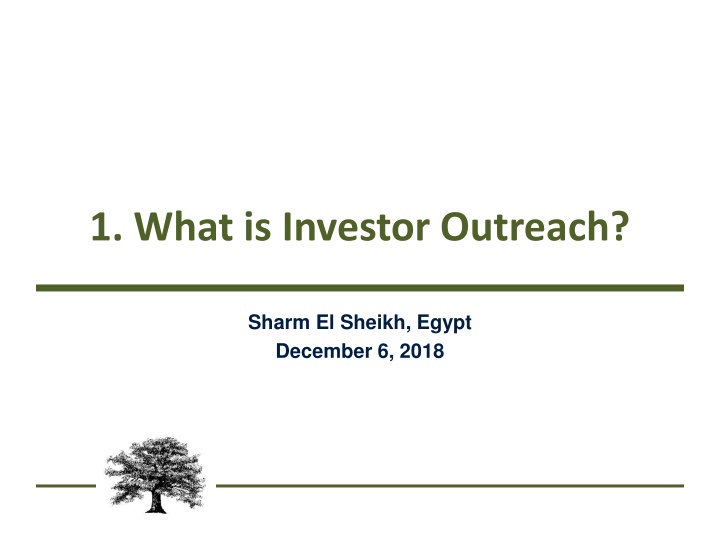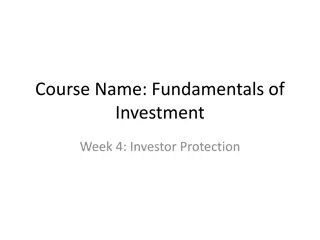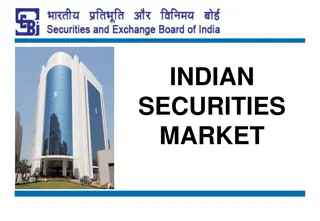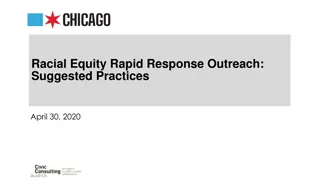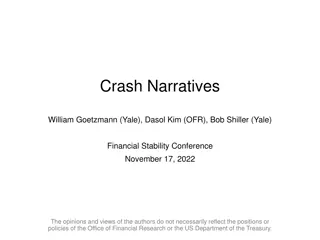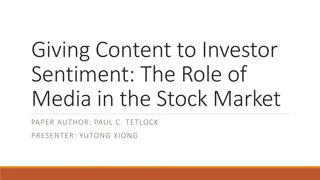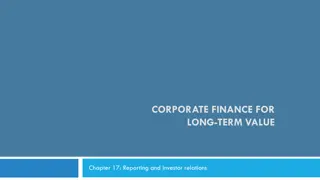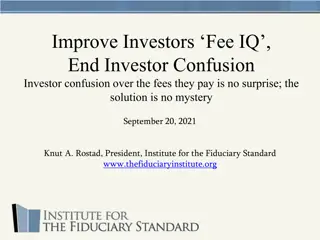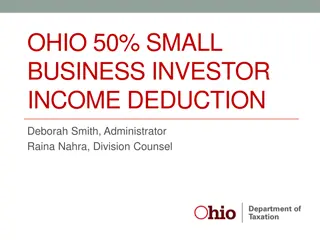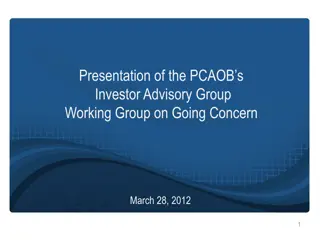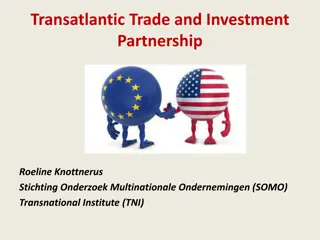Investor Outreach Strategy and Implications
Reactive vs. Proactive Promotion - the key differences and significance in attracting FDI. Learn about the importance of being proactive, the distinction between policy and strategy, and the essence of an Investment Promotion Strategy.
Download Presentation

Please find below an Image/Link to download the presentation.
The content on the website is provided AS IS for your information and personal use only. It may not be sold, licensed, or shared on other websites without obtaining consent from the author.If you encounter any issues during the download, it is possible that the publisher has removed the file from their server.
You are allowed to download the files provided on this website for personal or commercial use, subject to the condition that they are used lawfully. All files are the property of their respective owners.
The content on the website is provided AS IS for your information and personal use only. It may not be sold, licensed, or shared on other websites without obtaining consent from the author.
E N D
Presentation Transcript
1. What is Investor Outreach? Sharm El Sheikh, Egypt December 6, 2018
Recognizing the difference between Reactive vs. Proactive Promotion and the Implications Reactive investment promotion is about being able to respond to investors inquiries and to provide help to prospective investors. Proactive promotion is where an investment promotion agency sets out a strategy to actively target and pursue potential investors. Proactive promotion consists of various activities to identify and market to potential investors. Implications Prioritizing resources Selecting best bet sectors for proactive promotion Organizing around priority sectors Capacity to react to opportunities wherever they arise
Being Proactive is what makes a good IPI Being proactive only means making the decision to consciously influence investor interest towards the more attractive sectors or activities in your location. The underlying criteria of proactive promotion is being aware of what you have to offer and matching it to what investors are looking for. There is no shortcut for learning well your offer and researching what is happening in terms of investment trends. Attracting FDI is not about targeting the most impressive investment or investors; it is about attracting the right type of investment for your location. While you are at it, carefully plan on those investments that will generate the kind of impact your location would benefit from the most: Sustainable investment is the new paradigm for a reason!! 3
Policy vs Strategy There is often confusion in understanding the difference between policy and strategy; and between a national economic development strategy and an investment promotion strategy. In government, policies are laws and regulations established to set the basic rules and procedures on how to make decisions. Strategies are plans that will allow for a certain course of action/s to achieve specific objectives to reach a determined goal. Ideally, governments will set a wide national strategy with clear goals and objectives. Then policy can be developed or adapted to clarify and facilitate the rules and procedures which will assist in the successful implementation of the strategy. However, policy often pre-exists strategy. The key to maximizing the success of what one wants to achieve is to have strategy inform policy so it can be adapted or created anew to assist in providing coherence, clarity and predictability. 4
An Investment Promotion Strategy What is an investment promotion strategy? A well researched document that provides: Where you want to be within a certain time frame. identifying the objectives you want to reach to get you closer to the reality you want to create. developing a work program which will help you achieve those objectives. What is the main difference between a national economic development strategy and an investment promotion strategy? An economic development strategy focuses on achieving objectives which will assist the country in furthering its economic development. An investment promotion strategy is conditioned to focus on those parts of the economic development strategy which can benefit from private sector investment and most importantly, for which there is demand. The success of a marketing campaign or an investment promotion campaign is based on how many (and how much) potential investors are buying what you have to offer. Therefore, focus on selling what you can actually sell, because there is demand for it. Trying to sell that for which there is no demand is a waste of time and resources. 5
An Investment Promotion Strategy Investment promotion strategies may also differ from FDI promotion strategies. Investment promotion strategies usually refer to investment as whole and does not exclude foreign investment from domestic investment or vice versa. Some countries will have the investment promotion strategy set at a ministerial level and it focuses on wider private sector development and investment goals which include support towards specific economic sectors as it does to innovation, research and development, technological infrastructure and business start-ups, among others. FDI promotion strategies are focused on attracting foreign investment taking into consideration the current trends and demands of the international market/s. The target market is therefore different, and its specificity requires identifying the concrete demand and adapting your offer by packaging and tailoring your concrete offer to such demand. 6
An Investment Promotion Strategy FDI Investment promotion strategies are developed and implemented by IPAs! Or at least that is what is done at best practice IPAs around the world. The rationale behind it is that IPAs are the mandated bodies to implement the FDI policies and strategies and therefore have on- going exposure to international markets. It is this exposure and experience which makes IPAs the best suited institutions to develop the FDI attraction strategies. While other governmental institutions can be the ones to develop the FDI strategy, these cannot do it so on their own. The data and experience that feeds the strategy most effectively comes from the IPAs. In this sense, IPAs are best paced to develop such strategies. 7
FDI Strategy and Policy A strong FDI strategy should be consulted with other governmental institutions and relevant private sector organizations in order to maximize the efficiency and effectiveness of the planned activities. All IPA work programs produce results and such results generate important insights which can inform policy makers. If engaged in investor aftercare, IPAs can proactively play an important role in policy advocacy. Very often the policy recommendations extracted from analyzing the IPA s work are recommendations which do not focus only foreign investors. Therefore, it is also important to recognize that investment policy is applicable to ALL investors. FDI policy would imply in many cases that laws and regulations are being created or adapted targeting foreign investors only. While this does happen in many countries and makes sense in some very specific cases, for the most part, it goes against best practice where national treatment is a core principle of all investment law. 8
Results Driven Activities First and foremost, results driven activities refers to focusing in achieving the objectives you have laid out in your strategy or work program. The point of results driven activities is that all activities you do implement are done so with a concrete purpose in mind. In this sense, the most important point of having a results oriented program is that you do everything possible to achieve the desired results. No shortcuts! 9
Results Driven Activities However, results may prove to be mixed and that is perfectly fine! Promotion must respond to the market. It is cyclical and prone to new developments. They (your clients) adapt and therefore, so do you! Results are the basic ingredient to know among others: Are you getting what you aimed for? Has enough time gone by to determine if I need to re- shuffle my resources and attention? Am I achieving any of the milestones I set for myself? Is our approach the correct one? 10
How to Establish Priorities In investment Promotion priorities revolve around two key targets: sector or activities and market. 11
Selecting a Target Sector Main criteria for selecting target sectors or activities: Economic development objectives: are these job creation, capital investment, wage upgrading, R&D, export development, supply chain and cluster development, sustainable investment? Which sectors should be targeted to achieve the desired economic development objectives?; Competitive position: sectors where your location has a genuine competitive position and strong value proposition relative to competing locations for direct investment in these sectors; and Market demand: there can be sectors that meet economic development objectives and where the size and growth of the FDI and DDI inward investment market for each sector needs to be carefully considered and aligned to the economic development results being targeted and services being provided to companies. Source: Wavteq 12
Selecting a Target Sector First of all, you must decide the target sector/s and market/s. Deciding which are your priority sectors will very much depend on researching your location s: Natural attributes; Existing businesses in your location (and immediate vicinity); Evaluating the skills of your labor pool (local and surrounding areas); Assessing any available land and/or facilities which are available (and what kind of activities can be executed in those locations); Existing universities and vocational schools (and in immediate surroundings); Access to utilities and readiness of the identified land and/or facilities; Basically, get to know your location and build an offer! Incentives and any other existing advantages,
Selecting Target Market Some guidelines on how to select the target markets: Which countries are already your largest investors? While this guideline may not always fit the sector/s you have selected; such markets represent some advantages which others may not. One particularly valuable advantage is that the country/ies which already have a large presence of investors in your location tend to already know about you and therefore the image building work may require much less effort if any at all. However, if you select one of these countries for a selected sector of which you have very few investors , you will have to do additional image building in preparation for the outreach campaign. Identifying countries which have a large amount of investors within your target sector.
Selecting Target Market Depending on the sector you want to attract it is important to see also whether there is a demand for the products of your identified sector. This can be done by reviewing which markets are the largest importers of such products and by identifying the markets to which BiH already exports a significant quantity of products from the selected sector. In the case that there are several markets which have a large presence of companies within your target sector, it is important to review these to see which have been most active recently in investing internationally. While any of these guidelines can be a strong enough argument on its own, it is always better to be able to review these carefully to see if any of the markets in questions fulfill more than one of the guidelines mentioned above.
Target sector or target market first? There is no right answer: This is something you must consider based on your strategy. What matters most is that whatever you choose must have a clear rationale supporting it and that the secondary target factor is adapted to your decision in selecting one of the targeted factors over the other. The best way to determine which you decide to be your first target factor is to select them based on the one that you feel will provide you with the best results.
